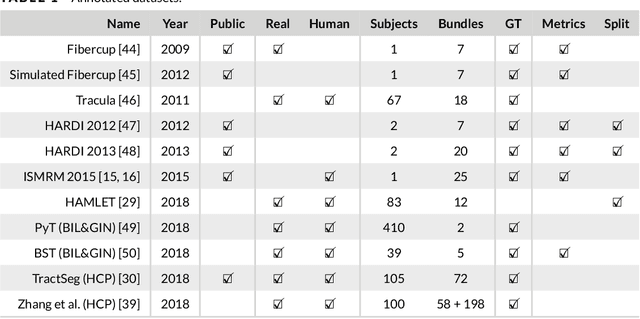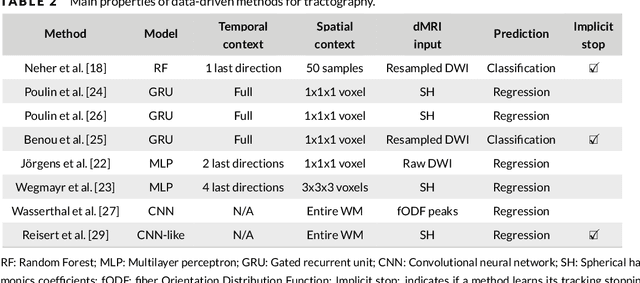Tractography and machine learning: Current state and open challenges
Paper and Code
Feb 14, 2019



Supervised machine learning (ML) algorithms have recently been proposed as an alternative to traditional tractography methods in order to address some of their weaknesses. They can be path-based and local-model-free, and easily incorporate anatomical priors to make contextual and non-local decisions that should help the tracking process. ML-based techniques have thus shown promising reconstructions of larger spatial extent of existing white matter bundles, promising reconstructions of less false positives, and promising robustness to known position and shape biases of current tractography techniques. But as of today, none of these ML-based methods have shown conclusive performances or have been adopted as a de facto solution to tractography. One reason for this might be the lack of well-defined and extensive frameworks to train, evaluate, and compare these methods. In this paper, we describe several datasets and evaluation tools that contain useful features for ML algorithms, along with the various methods proposed in the recent years. We then discuss the strategies that are used to evaluate and compare those methods, as well as their shortcomings. Finally, we describe the particular needs of ML tractography methods and discuss tangible solutions for future works.
 Add to Chrome
Add to Chrome Add to Firefox
Add to Firefox Add to Edge
Add to Edge